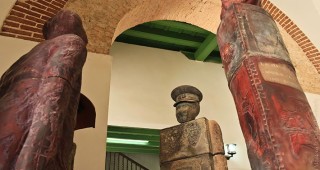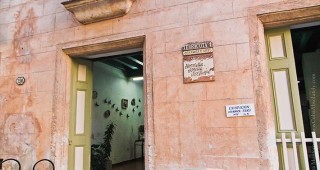Immediately south of the Convento de San Francisco de Asís, the squat yet imposing neo-classical building raised atop stairs served as the original Cámara de Representantes—the Republican House of Representatives, which was housed here until it was moved to the Capitolio in 1929. Then, the palace became home to the Ministry of Education (1929-1960) and, following the Revolutin, headquarters of the Poder Popular Municipal –essentially the town hall.
Today the main building is a museum, with two exhibit halls: one contains documents associated with important figures and historical events from the Republican period, (1902-59), including the first passports ever issued in Cuba and the office of the President of the Senate; and the other one focuses on the Literacy Campaign. (Note that the principal Literacy Campaign Museum is in Ciudad Libertad, in Marianao.)
Opening hours: 9:30am-5:30pm Tues-Sat; 9:30am-1pm Sun










 Eclectic
Eclectic








